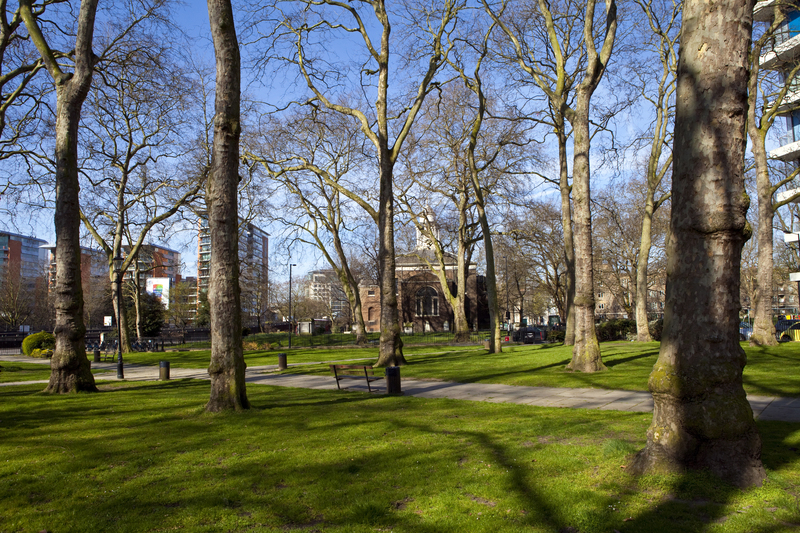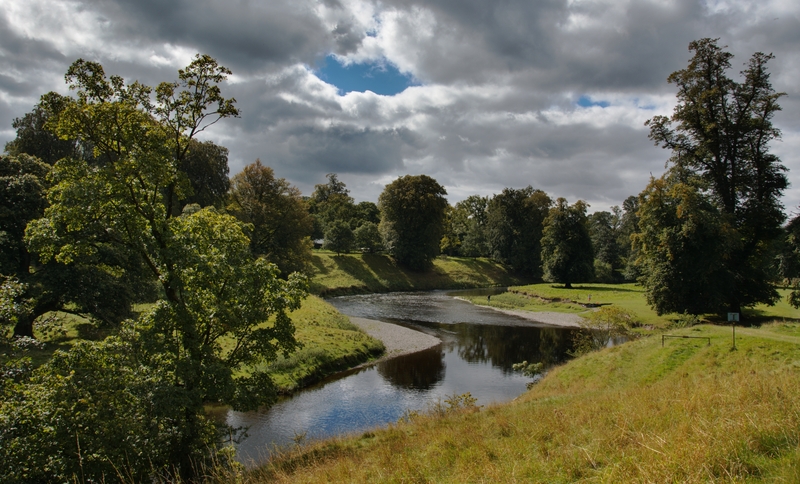Constructing Whimsical Garden Play Areas for Children
Posted on 27/06/2025
Constructing Whimsical Garden Play Areas for Children: A Creative Guide
A whimsical garden play area transforms any outdoor space into a wonderland where children's imaginations can soar. In today's fast-paced digital world, creating fun-filled outdoor play spaces is more important than ever for young minds. This comprehensive guide covers everything you need to know about designing, building, and maintaining unique, magical garden play areas that will keep kids entertained, active, and inspired.

Why Create Whimsical Garden Play Spaces?
Children thrive in environments that stimulate their curiosity and creativity. The great outdoors offers endless opportunities for hands-on exploration--and when you add a *playful touch* to your garden, that everyday space becomes the backdrop for unforgettable adventures.
- Physical Development: Garden play encourages kids to run, climb, jump, and develop coordination.
- Mental Stimulation: Whimsical designs and interactive features inspire creative storytelling and problem-solving skills.
- Emotional Well-being: Accessible play spaces help reduce stress, improve mood, and increase social interactions.
- Connection with Nature: Garden play areas foster a lifelong appreciation for the environment and outdoor activity.
Planning Your Whimsical Garden Play Area
Finding the Perfect Location
Before you start building, careful site selection is crucial. Evaluate your garden for safe, visible, and accessible spots. Look for:
- Adequate sunlight and shade for comfort throughout the day
- Flat or gently sloping terrain to ensure safe play
- Good visibility from indoors to supervise kids
- Distance from hazards like ponds, driveways, or thorny shrubs
Defining the Theme and Style
A memorable children's garden play area often has a whimsical theme--think fairy tale woods, pirate islands, enchanted castles, or forest forts. Involving your children in the design process sparks their investment and creativity.
- Ask your kids about their favorite stories, animals, or fantasy lands.
- Draw inspiration from folklore, cartoons, or classic nursery rhymes.
- Choose a coherent color palette and fun motifs (like toadstools, rainbows, or butterflies) to guide your design.
- Mix and match styles by incorporating both natural materials and bold, playful colors.
Setting a Budget
You don't need a huge investment to build an amazing outdoor play space. Many features can be handcrafted using recycled or upcycled materials. Decide early on:
- How much you want to spend on landscaping, equipment, and decor
- Which elements can be built as DIY projects versus purchased
- If you'll hire professional help for structures like treehouses or play forts
Key Elements of a Whimsical Garden Play Area for Children
To keep things fun and engaging, a garden play area should offer a mix of classic play structures and imaginative features. Here are some top ideas:
Creative Pathways and Secret Trails
Winding paths lined with colorful stones, logs, or stepping-stones invite exploration. Consider:
- Labyrinth or maze-like patterns for adventurous discoveries
- Fairy lights or solar lamps for evening play
- Planting fragrant herbs and flowers along the trail for a sensory experience
Fantastic Playhouses and Forts
A child-sized house or fort serves as a magical hideaway. Some popular variations:
- Treehouse nestled in sturdy limbs for bird's-eye adventures
- Willow teepee or living dome woven from flexible branches
- Colorful tents, yurts, or play sheds painted with playful designs
- Miniature castle or pirate ship for endless imaginary games
Nature-inspired Play Equipment
Encourage kids to embrace natural play with equipment made from logs, stumps, and natural materials:
- Boulder or log climbing frames for physical adventure
- Stump balance trails and obstacle courses
- Rope swings suspended from sturdy trees
- Sandpit framed by smooth rocks or wood for creative digging and building
Whimsical Garden Art
Vibrant decorations add a touch of enchantment to any corner. You might include:
- Painted signs ("Secret Garden," "Gnome Village," etc.)
- Upcycled sculptures from old metal, wood, or ceramics
- Handmade fairy houses and toadstool seats
- Wind chimes, mobiles, or colorful weatherproof banners
Interactive Sensory Stations
Sensory elements heighten play with touch, sound, and scent:
- Water play stations with pumps, basins, and channels
- Mud kitchens stocked with pots and utensils
- Musical features like outdoor drums, xylophones, or bells
- Flower beds for digging, planting, and bug-watching
Vegetable and Butterfly Gardens
Incorporate edible gardens to help kids learn about plants and healthy eating:
- Raised beds with easy-access crops like cherry tomatoes, strawberries, or carrots
- Nectar-rich flower patches to attract butterflies and pollinators
- DIY bug hotels and birdhouses for observing wildlife
Safety Considerations for Garden Play Areas
While whimsical play zones are all about fun, safety remains the top priority.
- Use Non-Toxic Materials: Choose paints, stains, and finishes that are child-safe and weatherproof.
- Soft Landing Surfaces: Install mulch, rubber mats, or grass under climbing features to prevent injuries.
- Secure Anchoring: Ensure that all swings, forts, and equipment are properly grounded and can't tip over.
- Supervision: Keep play structures within easy sight from your main living areas.
- Trim back sharp branches, remove thorny plants, and regularly inspect for hazards.
DIY Projects for Whimsical Outdoor Play Spaces
Building your own garden play elements is budget-friendly and rewarding. Here are a few DIY projects children adore:
1. Painted Stepping Stones
- Gather flat stones or cast your own from concrete.
- Let kids paint them with animals, shapes, or patterns.
- Arrange in meandering routes throughout the play area.
2. Sensory Herb Spiral
- Create a spiral raised bed from old bricks or stones.
- Plant mint, lavender, rosemary, and basil for touch-and-sniff exploration.
3. Pallet Fairy House
- Stack and secure wooden pallets to create a house-like frame.
- Decorate with bunting, potted flowers, and whimsical paint.
- Add old furniture or cushions inside for cozy play.
4. Magical Teepee
- Bend willow branches into a cone and tie at the top.
- Intertwine with vines or climbing plants for a "living" teepee.
Engaging Children in the Building Process
The most memorable garden play spaces are built with kids, not just for them. Involve your children by:
- Letting them brainstorm ideas and draw plans
- Assigning simple tasks like painting, planting, or decorating
- Encouraging them to name different areas or features
- Adding child-made crafts like painted rocks, wind socks, or mobiles
Maintaining Your Whimsical Garden Play Area
Regular upkeep ensures your space stays inviting and safe for years. Keep in mind:
- Inspect and repair play structures seasonally
- Touch up paint and replace worn decorations as needed
- Keep plantings tidy and remove fallen branches or debris
- Check for signs of pests, rot, or sharp edges
Inspiration: Whimsical Play Areas from Around the World
Looking for fresh ideas? Here are some globally inspired features to consider:
- Troll bridges and fairy circles from Scandinavian gardens
- Japanese bamboo water features adapted for playful splashing
- English wildflower meadows with hidden nooks
- Pirate ships and sand lagoons from Caribbean-themed play parks
- African-inspired painted murals and storytelling benches

Frequently Asked Questions about Creating Whimsical Garden Play Spaces
What age range are these play areas suitable for?
Most whimsical garden play areas can be adapted for ages 2 to 12. Always match equipment and features to your children's developmental stage and physical abilities.
Are there weatherproof materials recommended for garden play equipment?
Yes! Use rot-resistant woods (like cedar or redwood), durable recycled plastic, and metal protected with powder coating. Choose fabrics and paints designed for outdoor use.
How can I make a small garden playful and whimsical?
Focus on vertical features--like wall-mounted chalkboards or hanging fairy lights-- and small-scale elements like mini forts, raised beds, and portable sensory tables.
What plants are safe for children's gardens?
Opt for non-toxic, low-allergen plants such as sunflowers, snapdragons, marigolds, chives, mint, and strawberries. Avoid foxglove, oleander, and pokeweed.
Conclusion: Creating Lasting Magic with Garden Play Spaces
Constructing a whimsical garden play area for children is more than just landscaping--it's about cultivating wonder, freedom, and lifelong memories. By combining creative design, safe construction, and regular maintenance, you'll give your children a magical space to thrive--right in your own backyard.
Whether you're building a fairy-tale kingdom or a wild adventure land, the best garden play spaces grow with your family's imagination. Start small, dream big, and let laughter fill your garden for years to come!
- Encourage outdoor play and family connection.
- Support curiosity, learning, and discovery.
- Grow a sense of wonder--one playful feature at a time.
For more ideas and resources on constructing whimsical garden play areas for children, explore garden design books, family blogs, and community workshops. The magic begins right outside your door!

